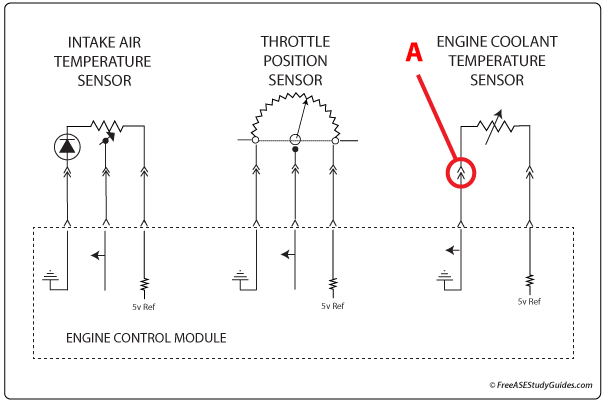ASE A8 Engine Performance Practice Test

21. An ohmmeter indicates excessive resistance at point A in the schematic diagram above. All of the following statements are true about this circuit EXCEPT:
- A. Point A is the ground connection for an (NTC) negative temperature coefficient sensor.
- B. Too much resistance at point A will delay torque converter lockup-clutch engagement.
- C. Too much resistance at point A will affect the air-fuel ratio.
- D. Too much resistance at point A will result in continuous engine cooling fan operation.